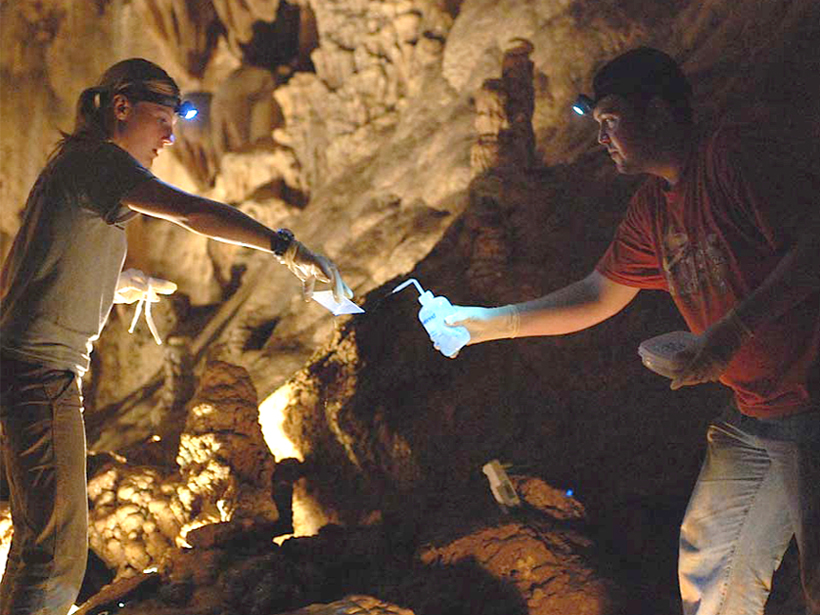Source: Geochemistry, Geophysics, Geosystems
The impressive mineral deposits that decorate cave interiors contain important proxies for understanding past climate. These upward growing stalagmite columns, icicle-like hanging stalactites, and flowstones (collectively called speleothems) form when water dissolves limestone above the cave and then redeposits it as the mineral calcite in the cave. Scientists are especially interested in these layered deposits because their carbon and oxygen isotope composition and growth rate can reflect past changes in temperature, rainfall, and vegetation above the cave.
Many climate analyses have assumed that speleothem growth is constant throughout the year. Recent research, however, indicates that their growth rates vary seasonally with changing environmental conditions such as temperature, calcium concentration in the water, and concentration of carbon dioxide (CO2) in cave air. Such seasonal changes in growth may introduce bias into records of past climate.
James et al. introduce a new global model that predicts how seasonal cave air flow patterns can influence the growth rates of speleothems. By mapping yearly temperature fluctuations around the world, the team found regions where seasonal ventilation, and thus CO2 accumulation in cave air, may affect speleothem growth rates. Middle- to high-latitude regions, as well as continental interiors, experience stronger seasonal ventilation patterns than those at lower latitudes and in maritime settings. The model also suggests that as long as water, calcium, and CO2 inputs remain constant, speleothems in middle- to high-latitude caves will grow more during well-ventilated cool seasons and less during the more stagnant, warm seasons when CO2 accumulates. In contrast, speleothems in the tropics should grow year-round. These results suggest that the dynamics of cave ventilation should be examined to gain the most accurate climate information from speleothems. (Geochemistry, Geophysics, Geosystems, doi:10.1002/2014GC005658, 2015)
—Julia Calderone, Freelance Writer
Citation: Calderone, J. (2015), Cave “breathing” affects mineral growth and climate clues, Eos, 96, doi:10.1029/2015EO036169. Published on 30 September 2015.
Text © 2015. The authors. CC BY-NC 3.0
Except where otherwise noted, images are subject to copyright. Any reuse without express permission from the copyright owner is prohibited.

